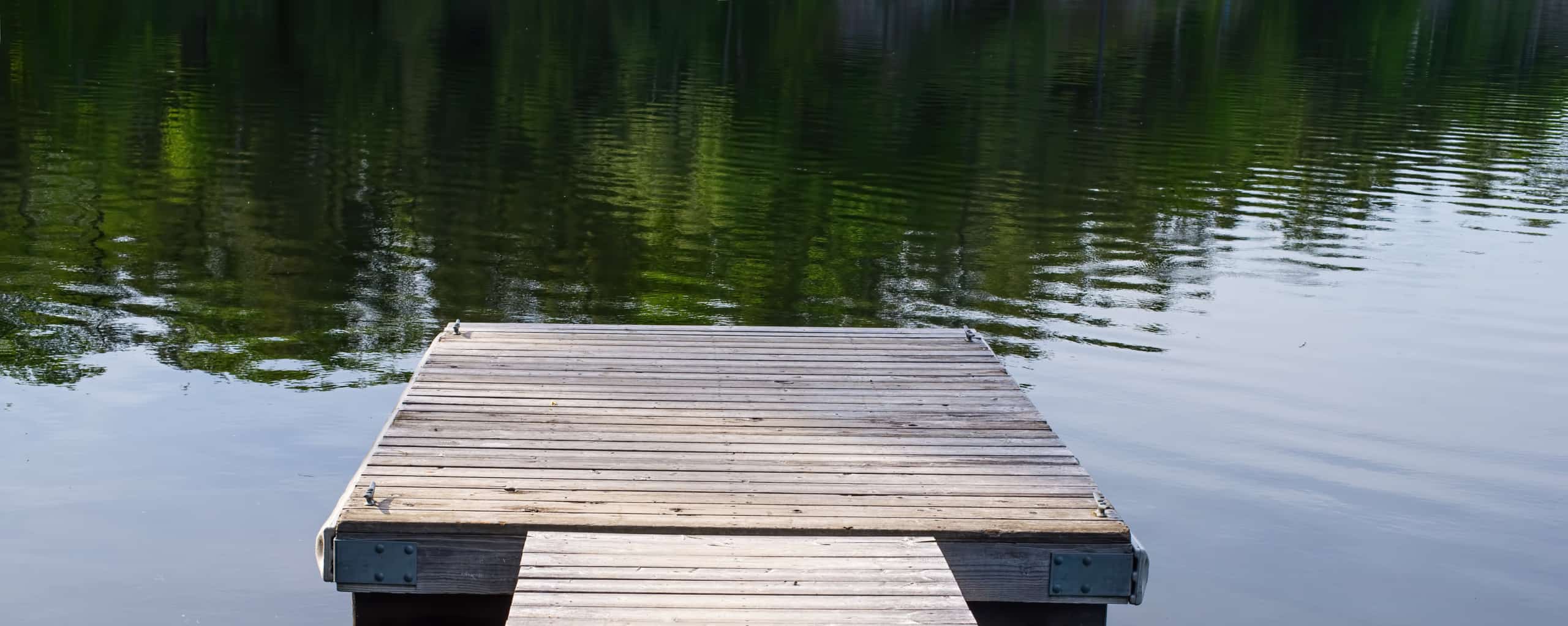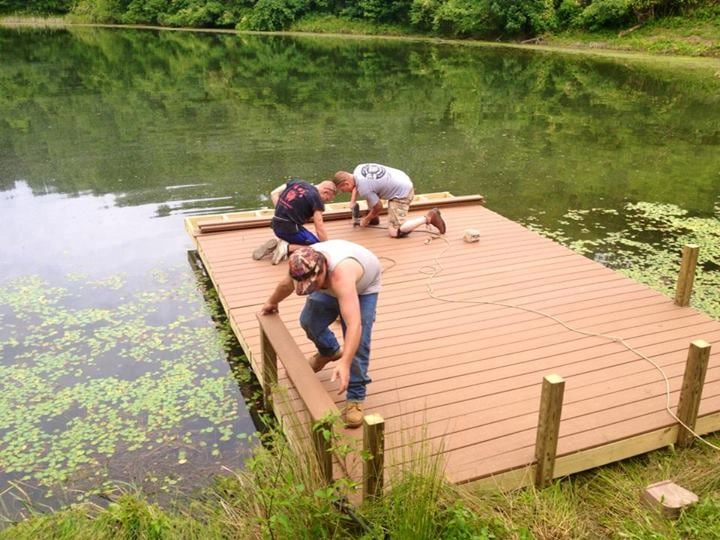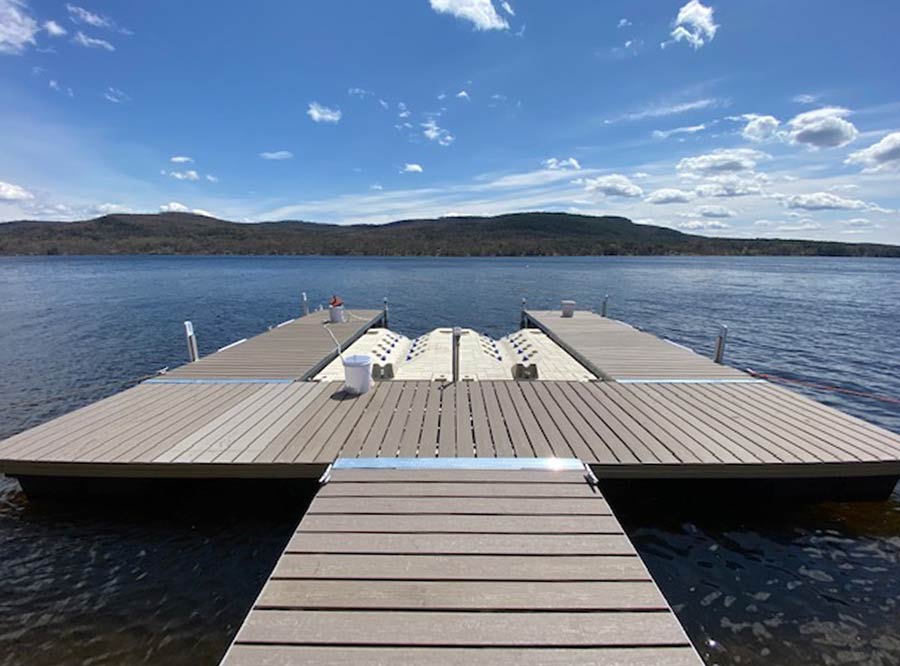Advantages of Collaborating With an Established Floating Dock Company for Peace of Mind
Advantages of Collaborating With an Established Floating Dock Company for Peace of Mind
Blog Article
Upgrade Your Beachfront With Durable Floating Docks
Upgrading your beachfront with long lasting floating docks can considerably boost both capability and appearances, giving a flexible option for numerous water tasks. These frameworks are designed to adapt to fluctuating water levels, guaranteeing safety and access throughout the seasons. With a series of materials offered, including low-maintenance choices and standard wood, picking the appropriate dock can complement your individual style and fulfill sensible needs. Understanding the nuances of setup and maintenance is critical for ensuring long life and efficiency. When making this investment?, what aspects should you think about.
Advantages of Floating Docks
Floating docks deal a wide range of benefits that improve their appeal for various maritime applications. Unlike typical set docks, floating docks rise and fall with the tide, making certain regular accessibility for boats and watercraft regardless of environmental conditions.
Additionally, floating docks are easier to mount and move, providing versatility for seasonal or momentary use. Their modular design permits for personalization to fit certain demands, whether for private marinas, household beachfronts, or industrial applications.
In addition, floating docks produce minimal disturbance to the aquatic atmosphere, preserving regional ecological communities and decreasing the possibility of erosion. They likewise provide improved safety and security and security for users, as their resilient nature offers a more flexible surface than rigid frameworks.
Moreover, floating docks can promote a varied variety of tasks, such as angling, swimming, and entertainment boating, making them an important asset for waterside growth. Their versatility and practicality make floating docks a favored option for a range of marine jobs.
Selecting the Right Materials
Selecting ideal products for floating docks is vital to their longevity, performance, and general performance. When picking materials, consider variables such as ecological exposure, maintenance needs, and architectural honesty. Common products include wood, plastic, aluminum, and composite choices, each offering unique advantages and drawbacks.
Wood, while cosmetically pleasing, calls for normal maintenance to avoid rot and degeneration. Pressure-treated timber can improve resilience, but it may still surrender to water damages over time. Plastic drifts, usually made from high-density polyethylene, are immune to deterioration and call for minimal upkeep, making them an appealing selection for low-maintenance applications.
Light weight aluminum is another practical choice, recognized for its strength and lightweight residential properties. It is resistant to corrosion and can withstand harsh weather, although it may be much more expensive than various other materials. Compound products integrate the best qualities of wood and plastic, providing a durable and low-maintenance option that resembles the look of timber without the associated disadvantages.
Ultimately, the choice of material must straighten with the meant use, environmental factors to consider, and budget restrictions, making sure a resilient and functional floating dock that fulfills your certain requirements.
Installation Process Summary
The successful installment of a floating dock depends on mindful preparation and execution, guaranteeing that it operates efficiently in its intended setting. The initial step entails analyzing website problems, consisting of water depth, coastline features, and dominating weather condition patterns, which will certainly notify the dock layout and anchoring system.
Following the website evaluation, the following stage is to prepare the floating dock parts. This includes assembling the framework, safeguarding drifts, and connecting any kind of required hardware. It is essential to guarantee that all connections are waterproof and robust to withstand marine conditions.
Once the dock is constructed, the installation process commences with positioning the dock in the water. This can include a crane or other training tools, specifically for bigger structures. Proper alignment is important for performance and safety.

Upkeep Tips for Long Life
Regular maintenance is necessary for making certain the durability and ideal performance of a floating dock. To achieve this, start with regular examinations a minimum of twice a year, concentrating on the honesty of the dock's structure, consisting of the flotation protection tools and linking hardware. Look for indicators of wear, deterioration, or damages, and attend to any problems without delay to avoid further degeneration.
Cleaning is an additional important element of maintenance. Remove debris, algae, and barnacles from the dock's surface area to stop slippery problems and keep visual charm. Make use of a moderate cleaning agent and a soft brush to avoid harming the dock's materials.
Additionally, make certain that the dock is appropriately anchored and secured to hold up against seasonal changes in water levels and weather. Examine the anchoring system for stability and make changes as essential.
Enhancing Your Outdoor Aesthetic
To develop a visually enticing exterior space, incorporating a drifting dock can dramatically improve the total visual of your beachfront property. Floating docks are not only functional yet can additionally work as a striking prime focus that enhances the natural environments - floating dock builder. floating dock builder Available in different products and styles, these docks can be personalized to match your building's building style and landscape
The enhancement of ornamental elements, such as integrated lights or elegant railings, even more elevates the dock's aesthetic appeal. Consider utilizing all-natural wood surfaces, which mix flawlessly with the setting, or choosing contemporary materials like aluminum or composite decking that supply a smooth, contemporary look.
Purposefully putting planters or seating locations on or around the dock can develop inviting spaces that motivate relaxation and satisfaction of waterfront sights. Additionally, including colors and textures that integrate with your landscape will certainly create a cohesive aesthetic throughout your outdoor location.

Final Thought

Updating your waterside with resilient floating docks can substantially improve both performance and aesthetic appeals, offering a flexible service for different water activities. Unlike traditional fixed docks, floating docks surge and fall with the trend, ensuring constant access for boats and boat no matter of environmental problems.Picking proper products for floating docks is important to their longevity, performance, and overall efficiency.When the dock is constructed, the installment process commences with positioning the dock in the water.In summary, floating docks offer various advantages, including versatility to water degree adjustments and a selection of product alternatives.
Report this page